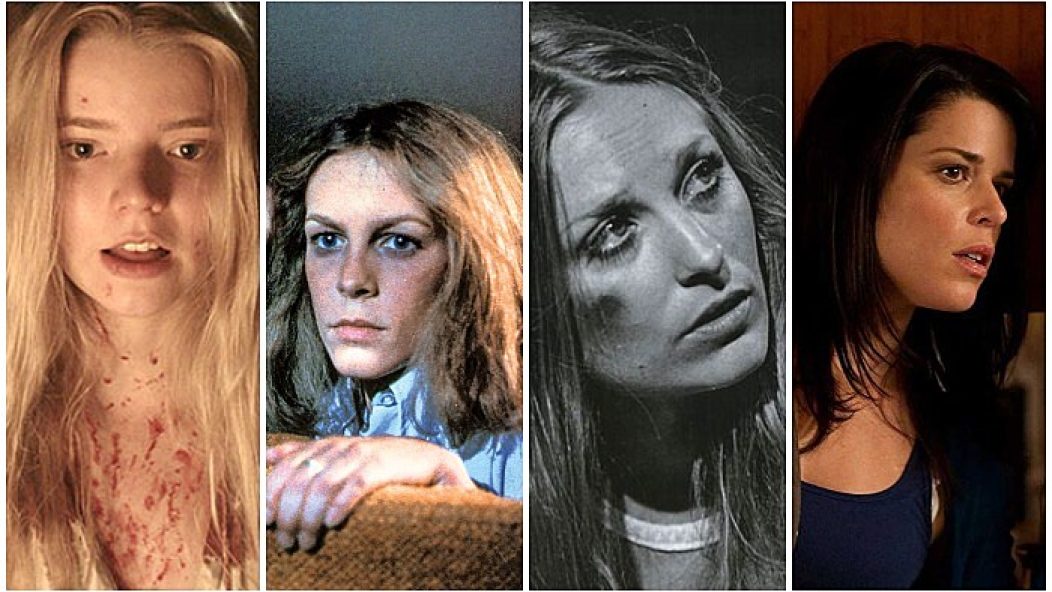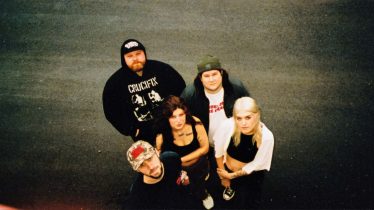
These are the 10 greatest final girls in horror movies
They are horror’s sole survivors—the women who take on deadly monsters, masked killers and terrifying aliens on their own terms. From Halloween’s Laurie Strode to Scream’s Sidney Prescott, the final girl has been a staple of horror movies since the early 1970s.
An alternately empowering and problematic character, the final girl, as defined by author Carol J. Clover in her influential 1992 book Men, Women, And Chain Saws, is typically portrayed as an intelligent, resourceful and morally pure young woman. Set apart from her peers, she alone has the skills and good luck to survive and ultimately take on evil.
Read more: Yes, Camp Crystal Lake from ‘Friday The 13th’ is real and you can visit it
Although the trope peaked with the slasher boom of the 1980s, the concept continues to evolve. Below, we’ve compiled a list of horror’s greatest final girls ranging from the originators to the new wave of rule-breaking scream queens who’ve pushed the term beyond its limits.
Sally Hardesty – The Texas Chain Saw Massacre
Portrayed by the late Marilyn Burns, Sally Hardesty from Tobe Hooper’s 1974 masterpiece The Texas Chain Saw Massacre stands as one of horror’s original final girls. Witness to the deaths of her friends Pam (Teri McMinn), Kirk (William Vail), Jerry (Allen Danziger) and disabled brother Franklin (Paul Partain) at the hands of chainsaw-wielding maniac Leatherface (Gunnar Hansen), Sally, unlike the final girls who would come in her wake, isn’t a fighter. Although she’s clearly terrified beyond reason, her strength lies in her endurance and resilience. Perhaps the most realistic of the final girls in this list, Sally’s survival comes at the cost of her sanity.
Laurie Strode – Halloween
When it comes to final girls, Halloween’s Laurie Strode (Jamie Lee Curtis) is the paradigm. Intelligent, bookish and self-conscious, Laurie juxtaposes her hard-partying friends Annie (Nancy Loomis) and Lynda (P.J. Soles). However, her meekness should not be misread as weakness. Armed with only her wits and ingenuity, she faces the relentless All Hallows Eve onslaught of killer Michael Myers (Nick Castle), saving herself and the kids in her care. Curtis’ performance is unmatched in the genre, conveying both strength and vulnerability. Just as Curtis is the ultimate scream queen, Laurie is the ultimate final girl.
Ellen Ripley – Alien
Although 1979’s Alien is ostensibly a science fiction film, its plot is unmistakably rooted in horror with a structure very similar to slasher films of the era. Sigourney Weaver’s Ripley introduced audiences to a new kind of final girl. Ripley does not cower. She does not scream, she does not cry—she simply kicks ass. Roundly ignoring Ripley’s order to observe standard quarantine protocols, the crew of the Nostromo falls victim to a hostile extraterrestrial xenomorph. Ripley alone survives (along with final cat, Jones) to destroy the alien menace and appear in the subsequent sequels. Laying the foundation for later strong female characters such as The Terminator’s Sarah Connor, Ripley redefines the final girl as an action hero.
Ginny Field – Friday The 13th Part 2
The body count continues as Jason Voorhees carries on his mother’s quest for vengeance in Steve Miner’s 1981 sequel Friday The 13th Part 2. Dispatching the original film’s final girl, Alice Hardy (Adrienne King), the Crystal Lake killer turns his single-minded attention to a new group of camp counselors. Among them is psychology student Ginny Field (Amy Steel). As Jason systematically kills her companions, Ginny is left to fend off the legendary killer by herself. Utilizing her knowledge of child psychology, she dons the wardrobe of Jason’s dead mother, calming him long enough to deal the masked killer a seemingly deadly blow. Using her brain instead of brute force, Ginny is one of the genre’s most innovative final girls.
Nancy Thompson – A Nightmare On Elm Street
One of the most iconic final girls of the 1980s, Nancy Thompson (Heather Langenkamp) first appeared in Wes Craven’s 1984 hit A Nightmare On Elm Street. As Freddy Krueger’s (Robert Englund) most enduring nemesis, Nancy faced the daunting challenge of battling a wholly supernatural killer. As Krueger massacred her friends in their dreams, Nancy discovered that she could bring the Springfield slasher into the real world. Vulnerable in reality, Krueger fell victim to Nancy’s deadly improvised booby traps. Turning her back on Krueger, Nancy seemingly robbed him of his power. Despite Krueger’s “defeat,” they would meet again in 1987’s A Nightmare On Elm Street 3: Dream Warriors.
Vanita “Stretch” Brock – The Texas Chainsaw Massacre 2
Directed by franchise creator Hooper, 1986’s The Texas Chainsaw Massacre 2 stars fan-favorite Caroline Williams as Vanita “Stretch” Brock. Stretch, an overnight DJ and reporter at a rundown Texas radio station, longs for a more serious career. However, the murderous Sawyer family has other plans for her. Stretch is a unique final girl in that she develops a rapport with the film’s principal villain. Recognizing Leatherface’s naivety, she saves herself by exploiting his repressed sexual urges. As a disrupting influence on the Sawyers’ workmanlike approach to their “livestock,” Stretch uses Leatherface’s emotional weakness to both survive and defeat his arguably more dangerous brother Chop-Top (Bill Moseley).
Barbara – Night Of The Living Dead (1990)
Makeup effects master Tom Savini’s criminally underrated 1990 reimagining of the horror classic Night Of The Living Dead hews closely to George A. Romero’s original in most respects. However, the notable exception is in the characterization of Barbara (Patricia Tallman). Where Romero’s Barbara (Judith O’Dea) collapses into a state of near catatonia in the face of the zombie plague, Savini allows the character to evolve from meek and mousy to resourceful and fearless. Much like Alien’s Ripley, the ’90s version of Barbara is an example of the final girl as an action hero, yet Tallman’s performance is in many ways more nuanced than Weaver’s. While there’s no doubt that Ripley has the skills to survive, Barbara’s courage is a work in progress forged in the horrific events in which she finds herself.
Sidney Prescott – Scream
The slasher movie entered its postmodern era with 1996’s Scream. Written by Kevin Williamson, the film allowed director Craven to deconstruct the genre he helped create as well as provide a pointed critique of horror’s conventions. In Sidney Prescott (Neve Campbell), we have, for the first time, a final girl who is conversant in the tropes of the horror genre. Armed with this knowledge, Sidney subverts “the rules” to defeat the killers whose own knowledge and adherence to those same rules proves to be their downfall. Campbell’s performance imbues Sidney with humanity, humor and a relatability that instantly allows the audience to see itself in the character. Ultimately, it’s this sense of identification that makes Sidney Prescott one the genre’s most enduring final girls.
Mia Allen – Evil Dead (2013)
For many horror fans, the thought of a remaking the beloved cult favorite The Evil Dead seemed like blasphemy. However, filmmaker Fede Álvarez proved the naysayers wrong with his over-the-top, gore-drenched remake. Although Álvarez’s film may lack Sam Raimi’s signature visual style and is (mostly) Bruce Campbell-free, the 2013 reboot more than makes up for these deficiencies in both plot and character development. Evil Dead also features a compelling take on the final girl in Mia Allen (Jane Levy). Far from the pure and innocent stereotype, Mia is a recovering heroin addict whose actions are under constant suspicion. Mia’s character also diverges from the final girl archetype. The ordeal she faces isn’t merely physical but also a threat to her identity. Possessed by the demonic forces of the dreaded Naturom Demonto, she’s an unwitting threat to her friends for much of the film. Yet, she alone lives to battle the movie’s ultimate evil. Groovy.
Thomasin – The Witch
Robert Eggers‘ critically acclaimed supernatural thriller The Witch further subverts the final girl trope. Anya Taylor-Joy stars as Thomasin, the eldest daughter of 17th century Puritans exiled to the wilds of New England. When Thomasin’s infant brother, Samuel, disappears while in her care, she becomes an object of suspicion to her grief-stricken parents. As the family is beset by tragedy and illness, Thomasin’s father accuses her of witchcraft. In the end, however, it’s the devil in the guise of the family’s goat Black Phillip that’s been behind the family’s dissolution all along. Her parents and siblings are dead. Thomasin accepts Black Phillip’s offer to “live deliciously” and levitates into the air with a coven of witches. Rather than fight evil, Thomasin joins it, upending the final girl archetype. Rejecting the religious and cultural values of her family, she embraces her newfound freedom. A thematically complex film, The Witch recontextualizes the final girl for the 21st century.








